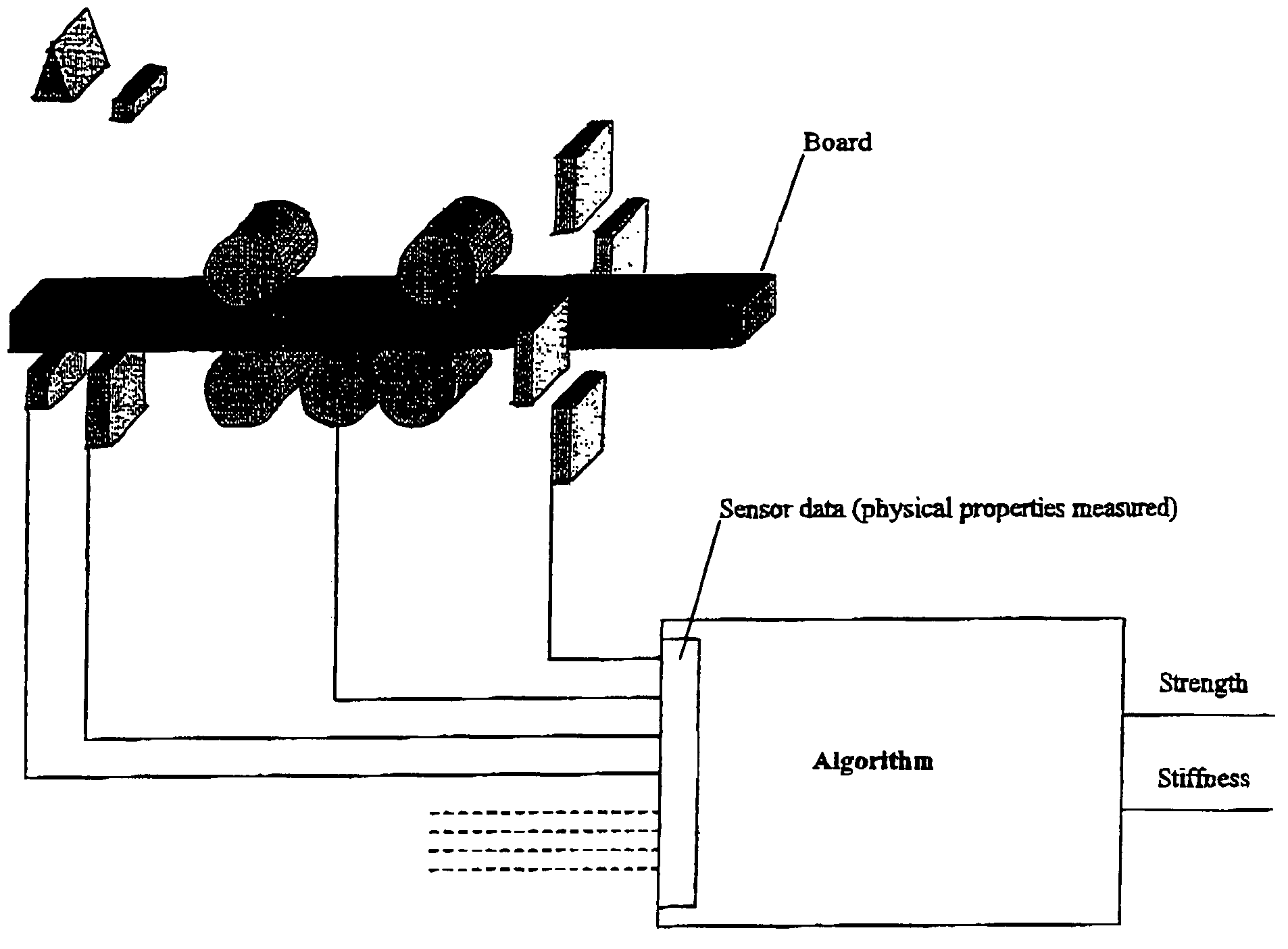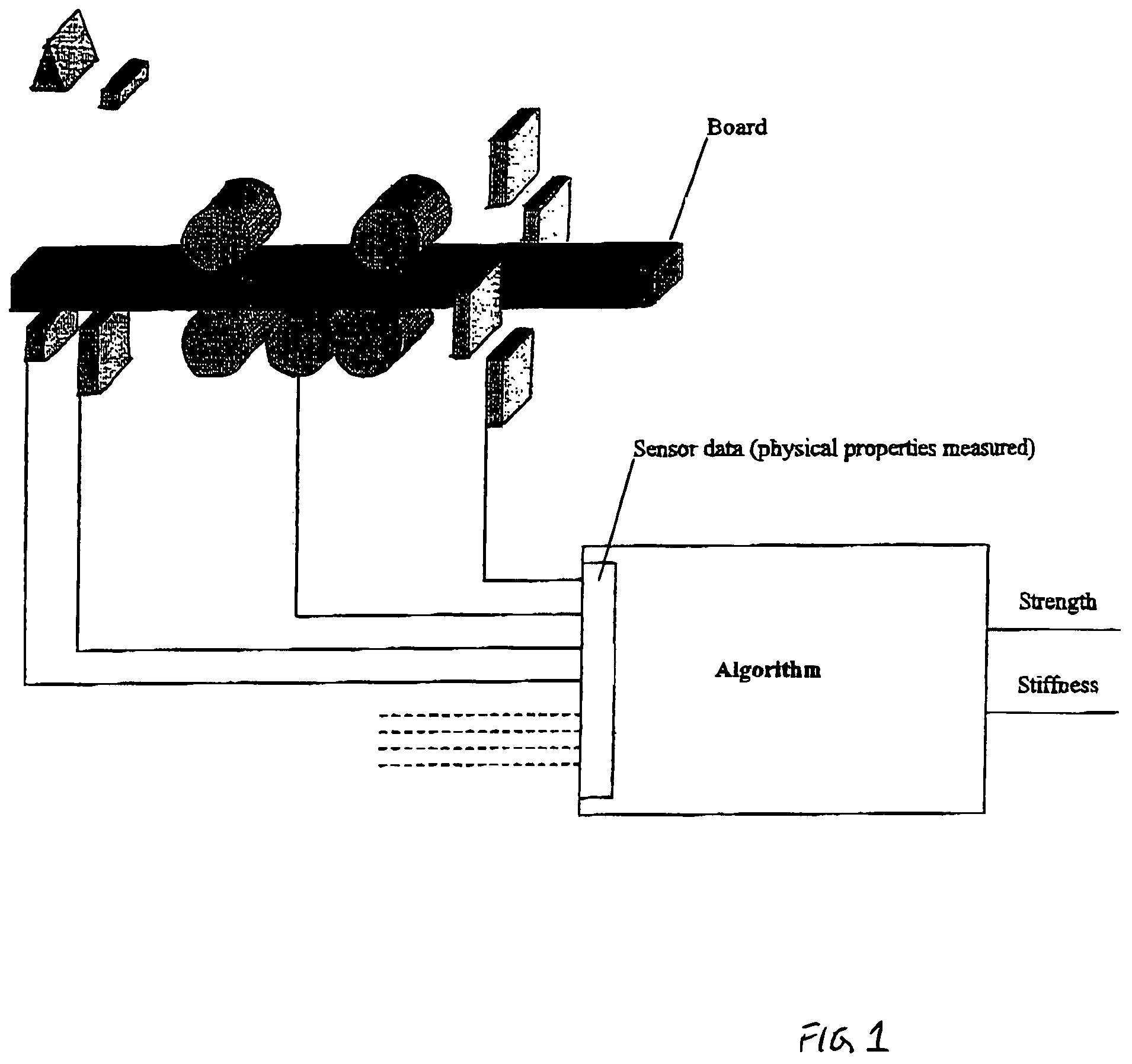Method of wood strength and stiffness prediction
a wood technology, applied in the field of wood can solve the problems of poor correlation to strength, inability to accurately predict strength or stiffness, and inability to meet the needs of high-quality strength and stiffness prediction of today's variable wood resource, etc., to reduce clear wood equivalent density
- Summary
- Abstract
- Description
- Claims
- Application Information
AI Technical Summary
Benefits of technology
Problems solved by technology
Method used
Image
Examples
Embodiment Construction
[0125]We have developed a machine to predict the strength and stiffness of wood based on a physical model using several sensing technologies. A physical model is an algorithm that relates the sensor information to the strength / stiffness of the material based on physical properties of the material and other characteristics, such as defects. The machine can integrate many sensing technologies into a single model and provides differing accuracy prediction based on the types and number of sensors used. In one embodiment, this technology builds on an X-ray based strength-grading machine, such as sold by Coe Newnes / McGehee ULC under the trademark XLG (X-ray Lumber Gauge).
[0126]The following physical aspects of wood effect strength and stiffness of wood directly: wane, moisture content, Modulus of Elasticity including whether measured flatwise or edgewise, growth ring thickness or density (rings / inch), grain angle deviation, density, knots (location, density, type and size), location in th...
PUM
| Property | Measurement | Unit |
|---|---|---|
| strength | aaaaa | aaaaa |
| stiffness | aaaaa | aaaaa |
| thickness | aaaaa | aaaaa |
Abstract
Description
Claims
Application Information
 Login to View More
Login to View More - R&D
- Intellectual Property
- Life Sciences
- Materials
- Tech Scout
- Unparalleled Data Quality
- Higher Quality Content
- 60% Fewer Hallucinations
Browse by: Latest US Patents, China's latest patents, Technical Efficacy Thesaurus, Application Domain, Technology Topic, Popular Technical Reports.
© 2025 PatSnap. All rights reserved.Legal|Privacy policy|Modern Slavery Act Transparency Statement|Sitemap|About US| Contact US: help@patsnap.com



